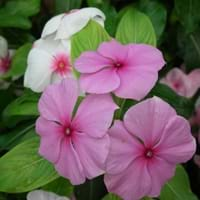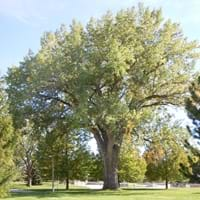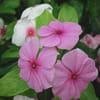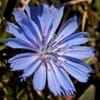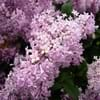Life Span
Perennial
Perennial
Type
Flowering Plants, Shrubs
Tree
Origin
Madagascar
Northeastern United States, Mid-Atlantic United States, Southeastern United States, Central United States, Canada, Mexico
Types
Purple vinca, Vinca, cherry red, strawberry color
Plains Cottonwood, Rio Grande cottonwood
Habitat
Subtropical climates, Tropical regions
bottomlands, Floodplain, Hardwood forests, Riverbanks
USDA Hardiness Zone
4-9
3-9
Sunset Zone
A1, A2, A3, H1, H2, 1a, 1b, 2a, 2b, 3a, 3b, 4, 5, 6, 7, 8, 9, 10, 11, 12, 13, 14, 15, 16, 17, 18, 19, 20, 21, 22, 23, 24
1a, 1b, 2a, 2b, 3a, 3b, 4, 5, 6, 7, 8, 9, 10, 11, 14, 15, 16, 17, 18, 19, 20, 21
Habit
Clump-Forming
Upright/Erect
Flower Color
Magenta, Pink, Rose
Red, Green
Flower Color Modifier
Not Available
Bicolor
Fruit Color
Not Available
White
Leaf Color in Spring
Dark Green
Green, Gray
Leaf Color in Summer
Dark Green
Green
Leaf Color in Fall
Dark Green
Yellow
Leaf Color in Winter
Dark Green
Not Available
Leaf Shape
Oval
Toothed curved and flat petiole
Plant Season
Fall, Spring, Summer, Winter
Summer, Fall
Sunlight
Partial shade
Full Sun
Growth Rate
Fast
Very Fast
Type of Soil
Loamy, Sandy, Well drained
Loam, Sand
The pH of Soil
Neutral, Slightly Alkaline
Acidic, Neutral
Soil Drainage
Well drained
Average
Bloom Time
Fall, Spring, Summer
Early Spring
Tolerances
Drought, Pollution, Salt
Drought, Soil Compaction, Wet Site
Where to Plant?
Container, Ground, Pot
Ground
How to Plant?
Seedlings, Stem Planting, Transplanting
Seedlings, Stem Planting
Plant Maintenance
Medium
Low
Watering Requirements
Does not require lot of watering, Medium
Keep ground moist, Requires regular watering, Requires watering in the growing season, Water daily during growing season, Water Deeply, Water more in summer
In Summer
Lots of watering
Ample Water
In Spring
Moderate
Ample Water
In Winter
Average Water
Average Water
Soil pH
Neutral, Slightly Alkaline
Acidic, Neutral
Soil Type
Loamy, Sandy, Well drained
Loam, Sand
Soil Drainage Capacity
Well drained
Average
Sun Exposure
Partial shade
Full Sun
Pruning
Prune ocassionally
Remove dead branches, Remove hanging branches
Fertilizers
All-Purpose Liquid Fertilizer
fertilize in growing season, Nitrogen
Pests and Diseases
Botrytis Blight, Canker, Crown rot, Pythium rot, Root rot
Aphids, Borers, Caterpillars, Insects
Plant Tolerance
Drought
Drought, Soil Compaction, Wet Site
Flower Petal Number
Single
Not Available
Foliage Texture
Medium
Medium
Foliage Sheen
Glossy
Glossy
Invasive
Sometimes
Sometimes
Attracts
Butterflies
Not Available
Allergy
Intestinal gas, Nausea, Vomiting
Hay fever, Headache, Runny nose, sneezing
Aesthetic Uses
Beautification, Showy Purposes
Landscape Designing
Beauty Benefits
Not Available
No Beauty Benefits
Environmental Uses
Air purification
Air purification, Forms dense stands, Prevent Soil Erosion, Shadow Tree, Shelter for wildlife, Wildlife, Windbreak
Medicinal Uses
Chest pain, High blood pressure, Inflammation, Sore throat, Tooth ache, Wounds
Anodyne, Anthelmintic, anti-inflammatory, Febrifuge
Part of Plant Used
Whole plant
Inner Bark, Leaves, Seeds
Other Uses
Decoration Purposes, Showy Purposes, Used as Ornamental plant
Biomass for fuel, Used as firewood, Used As Food
Used As Indoor Plant
Yes
No
Used As Outdoor Plant
Yes
Yes
Garden Design
Bedding Plant, Container, Edging
Screening / Wind Break, Shade Trees
Botanical Name
Catharanthus roseus
POPULUS deltoides
Common Name
Madagascar periwinkle or rosy periwinkle
Eastern Cottonwood
In Hindi
Periwinkle
Eastern Cottonwood
In German
Immergrün
Eastern Cottonwood
In French
Pervenche
Cottonwood Orient
In Spanish
Bígaro
Cottonwood del Este
In Greek
μυρτιά
Ανατολική Cottonwood
In Portuguese
Mirta
Cottonwood Oriental
In Polish
Barwinek
Eastern Cottonwood
In Latin
Periwinkle
Orientalium Poplar
Phylum
Mollusca
Anthophyta
Class
Gastropoda
Dicotyledonae
Order
Geraniales
Salicales
Family
Apocynaceae
Salicaceae
Genus
Catharanthus
Populus
Clade
Not Available
Angiosperms, Eudicots, Rosids
Tribe
Not Available
Not Available
Subfamily
Not Available
Salicoideae
Season and Care of Periwinkle and Eastern Cottonwood
Season and care of Periwinkle and Eastern Cottonwood is important to know. While considering everything about Periwinkle and Eastern Cottonwood Care, growing season is an essential factor. Periwinkle season is Fall, Spring, Summer and Winter and Eastern Cottonwood season is Fall, Spring, Summer and Winter. The type of soil for Periwinkle is Loamy, Sandy, Well drained and for Eastern Cottonwood is Loam, Sand while the PH of soil for Periwinkle is Neutral, Slightly Alkaline and for Eastern Cottonwood is Acidic, Neutral.
Periwinkle and Eastern Cottonwood Physical Information
Periwinkle and Eastern Cottonwood physical information is very important for comparison. Periwinkle height is 1.97 cm and width 2.96 cm whereas Eastern Cottonwood height is 3,050.00 cm and width 2,130.00 cm. The color specification of Periwinkle and Eastern Cottonwood are as follows:
Periwinkle flower color: Magenta, Pink and Rose
Periwinkle leaf color: Dark Green
Eastern Cottonwood flower color: Red and Green
- Eastern Cottonwood leaf color: Green and Gray
Care of Periwinkle and Eastern Cottonwood
Care of Periwinkle and Eastern Cottonwood include pruning, fertilizers, watering etc. Periwinkle pruning is done Prune ocassionally and Eastern Cottonwood pruning is done Remove dead branches and Remove hanging branches. In summer Periwinkle needs Lots of watering and in winter, it needs Average Water. Whereas, in summer Eastern Cottonwood needs Ample Water and in winter, it needs Average Water.
